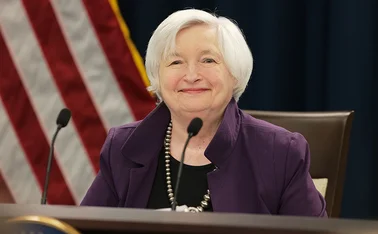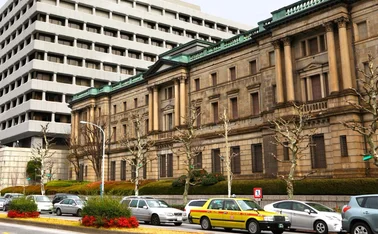
Who holds the wealth of nations?
Recent years have witnessed spectacular growth in official sector assets all over the world. The most visible and talked about growth has been in central bank reserves, especially in Asia. However, increasingly, a different type of public-sector player has started to register on the radar screen - we shall refer to them as sovereign wealth managers1. These are neither traditional public-pension funds nor reserve assets supporting national currencies, but a different type of entity altogether; and the first half of the article offers a short guide to this emerging group. However, as is discussed later in the article, the line separating sovereign wealth managers and central bank reserve assets is starting to blur.
Sources of wealth
Typically, sovereign wealth funds are a by-product of national budget surpluses, accumulated over the years due to favourable macroeconomic, trade and fiscal positions, coupled with long-term budget planning and spending restraint. Usually, these funds are set up with one or more of the following objectives: insulate the budget and economy from excess volatility in revenues, help monetary authorities sterilise unwanted liquidity, build up savings for future generations, or use the money for economic and social development. Some of the funds are fairly new, while others have been around for decades. The reason they have attracted renewed interest is threefold: a noticeable pick-up in the number of new sovereign wealth funds set up around the world; a particularly rapid pace of asset accumulation; and the sheer size and scope of some of them, putting a number of these funds on a par with some of the largest public-pension plans and central bank reserves.
Not just natural resources
Some experts call them oil or natural resource funds because the overwhelming majority was created with excess budget revenues from the exports of oil, gas, copper, diamonds, phosphates and so on. However, some - albeit a minority - have nothing to do with natural resources. Take GIC and Temasek Holdings in Singapore, for example. These can hardly be attributed to mineral resources. At the other end of the spectrum, among the really poor and undeveloped countries, there are cases (also a minority) where such funds are formed from aid money coming from overseas donors, which again is not necessarily directly tied to any natural resource endowments.
True, when one thinks of sovereign wealth funds, the immediate examples that come to mind are Norway's Government Petroleum Fund (GPF), Government of Singapore Investment Corporation (GIC), Abu Dhabi Investment Authority (ADIA), Kuwait Investment Authority (KIA), as well as the more recent examples of national oil and stabilisation funds in Kazakhstan, Azerbaijan and Russia. However, available information reveals many more similar institutions all over the world, located in developed and emerging-market nations, resource-rich and resource-poor countries, across continents, cultures and time zones. Table 1 below pulls together data on various national funds, and while every effort was made to be as comprehensive as possible, they are not intended to be exhaustive2.
High stakes
We estimate the aggregate total of this asset pool globally to be at least $895 billion3. It is very concentrated, with the top five players accounting for more than 75% of the total. To put this asset base in perspective, it is still less than a quarter of the $3.8 trillion of the total reserves managed by central banks or a third of the $3 trillion of American public pension money. On the other hand, it is roughly on a par with the hedge fund industry, which has arguably attracted more attention in the last few years than any other area of global finance. And like hedge funds, sovereign wealth assets continue growing at a very rapid pace.
There are at least three reasons why the growth of sovereign wealth funds merits close attention. First of all, as this asset pool continues to grow in size and importance, so will its potential impact on various asset markets. Secondly, sovereign wealth funds - while not nearly as homogeneous as central banks or public pension funds - do have a number of interesting and unique characteristics in common, which, in our opinion, make them a distinct and potentially valuable tool for achieving certain public policy and macroeconomic goals. The third reason to look more closely at sovereign wealth funds is to answer the following question: are central bank reserve managers - at least those among them who have accumulated massive foreign exchange reserves in recent years - starting to act more like sovereign wealth managers? What precisely is the difference between the two, and how can we expect them to develop and relate to one another in the future?
Yet a review of publicly available information used in researching this article indicates that sovereign wealth management has not received anything near the attention bestowed upon central banks and pension funds. The article now considers the third of these: the large and potentially controversial area of the relationship between central bank reserves and sovereign wealth management.
While nobody seriously expects central bankers to uniformly change their investment objectives and practices, one can envisage that those with very large asset pools will gradually change their approach to the "excess" portion of reserves, and incorporate some aspects of sovereign wealth management. While this will not necessarily happen in the form of a "carve-out" of sovereign wealth management functions from existing central bank reserves - certainly not across the board - such cases can and do happen, with the latest example currently unfolding before us.
Korea's new fund
In December 2003 the South Korean government announced plans to use around $20 billion-worth of central bank reserves to launch a separate government investment arm called Korea Investment Corporation (KIC). The plan initially met with criticism and open resistance from the Bank of Korea, as it was no doubt concerned with this being seen as government interference with monetary and reserve policy, and central bank independence in general. However, the government managed to persuade the central bank of the benefits of its proposal. It also helped that an agreement was reached that the Bank of Korea would retain the option to recall these assets in case of an emergency, meaning that the funds would effectively be retained by the central bank as international reserves while being entrusted to the KIC for management. Retention of reserve status also meant diversification of assets would be limited to liquid public instruments, ruling out investment in real estate or private equities.
The proposed entity appears to be modelled on Singapore's GIC, and has as its main objective - apart from delivering competitive and attractive returns - to help develop Korea as a major regional financial hub and asset management centre. The launch is set for 2005, and while the initial funding will come from central bank reserves (the latest estimate from Seung Park, governor of the central bank, stands at $17 billion), it will eventually include money from pension plans and other government funds. The architects of the plan seem to be very mindful of their Singaporean peers not only in terms of the concept and design for the KIC, but also regarding the eventual target size: assets are expected to overtake GIC and go well beyond $100 billion.
Given the scale and novelty of the concept for the Korean market, and more importantly, the scope of proposed government involvement, concerns have been raised with regard to the KIC being used as a vehicle for the government's policy goals to the detriment of achieving competitive returns. In order to assuage such concerns, government officials have gone out of their way to stress that they will guarantee KIC's independence, transparency and "commerciality" by minimising the government's role as the supervisor and by involving private sector experts. Korea may be unique in the way it is going about structuring its new sovereign wealth manager, but it is not the only country in recent years to deploy some of its foreign exchange reserves in imaginative ways. Consider the policies in the table below.
Central bank evolution
All these actions take different forms, pursue different objectives and will probably have very different results. But there is one common thread: all are from Asian countries with very large and rapidly growing foreign reserves, which have recently acquired a particularly high international profile. They are situations where government and central bank are so comfortable with the level of reserves that they are prepared to transfer a sizable chunk to other, non-traditional purposes.
This transformation could take the form of carving out and managing some of these reserves in a different format, entrusted to a dedicated sovereign wealth management agency. This is the model of Singapore and now Korea. Alternatively, it could take the form of keeping all the monetary and fiscal reserves under one roof at the central bank, but splitting the funds into separate portfolios with different objectives, risk profiles, time horizons and allowed instruments. This is the model of the Hong Kong Monetary Authority, which maintains a backing portfolio for liquidity purposes to support the fixed peg to the American dollar, and an investment portfolio for wealth management purposes. There are potential benefits and disadvantages to both approaches.
The in-house approach
Keeping everything in-house has the obvious advantages of maintaining centralised control of all sovereign assets in one place, as well as avoiding the additional costs of setting up a new and untested management entity. It allows for more nimble reaction in the markets, unconstrained by having to coordinate two separate entities. For example, in the critical days of August 1998, when Hong Kong markets were under attack from the "double play" speculators, it was imperative that all the difficult intervention decisions be taken quickly and in strict confidence. The fact that monetary authorities had to coordinate actions in foreign exchange and stock markets simultaneously was arguably helped by the fact that communication was within the central bank.
On the other hand, there are some potential pitfalls to keeping everything in the central bank. For example, liquidity management and wealth management are two very different disciplines. Even if both can be separated at the operational level, to the extent that both are managed within one organisation, the reporting lines will feed into the same group of senior managers and board members. If the latter have the mindset of classical central bankers, there is a real risk that they would end up with the governance style and approach that is optimal for reserves management but not entirely appropriate for sovereign wealth management. Another related issue is the question of reputation risk, which was mentioned in the two-page opinion piece in the previous issue of Central Banking. Delegating sovereign wealth management to a separate entity may "liberate" these assets from the conservative ways of a typical central bank and thus increase their risk-taking capacity. Finally, maintaining different fund management teams within different organisations can provide more flexibility in structuring and differentiating compensation.
Whatever the actual shape or form, the general trend is unmistakable: a major part of official reserves is gradually moving from classic risk-averse liquid assets to more broadly diversified and risk-tolerant sovereign wealth. This gives investment specialists in government a larger risk budget and a much wider choice of asset classes, instruments and tools to construct more efficient portfolios and extract better risk-adjusted returns. But it can do more than that: it can provide new and sophisticated tools to economic and monetary policymakers as well.
Saving for rainy days
One final thought: many Asian countries that have accumulated enormous foreign reserves - perhaps not coincidentally - happen to face some very difficult challenges and troubling uncertainties. Japan has the fastest ageing society in the world, lives under constant threat of a devastating earthquake and has a highly unstable and hostile regime with nuclear capabilities next door. South Korea faces the same hostile and difficult neighbour, with the added complexity of having to prepare for a possible collapse and humanitarian catastrophe, and the ensuing urgent requirement to accommodate and integrate the north. Taiwan has to live constantly under the shadow of the People's Republic of China, with whom it has a very volatile relationship. China in turn behaves with superpower-like global drive and ambition, all the while working hard to accommodate approximately 200m unemployed or underemployed people in the provinces - a potentially explosive mix and hence a major political and social headache for the government. Hong Kong and Singapore may not face similar geopolitical problems or threats of natural disasters, but they are increasingly worried about the challenges to their traditional post-war development models, which more and more seem to have run their course.
How much?
These days one often hears a question posed with regard to huge foreign exchange reserves accumulated by these countries along the lines of: "Do they really need so much?" In terms of intervening to support their currencies, the answer is a resounding no. But frame the question differently: "How much sovereign wealth do these countries need to provide economic, political and social security - be it through faster development or dependable insurance against the huge risks they run?" and the answer may well be different. One example may best illustrate the point: Kuwait managed to regain its independence and rebuild the country after the Iraqi invasion in large part thanks to the large pool of assets accumulated and managed by KIA. This lesson is not lost on Asian sovereign wealth managers.
Notes
1 For the most recent discussion of this subject, see "From reserves to sovereign wealth management," Central Banking, Volume XV, Number 3, February 2005.
2 About a dozen more national wealth funds were identified in our research, but were not included in Table 1, either due to pending inception or because of the very limited nature of publicly available information. These include funds based in Korea, Qatar, Colombia, Ecuador, Mexico, Papua New Guinea, Nigeria, Chad, East Timor, São Tomé e Príncipe, and Sudan.
3 Given the likely asset size of some sovereign funds which were not included in the above table (e.g. Korea, Qatar), and the persistently higher prices of oil and other commodities, the likely grand total is probably closer to US$ 1 trillion at the time of writing.
Only users who have a paid subscription or are part of a corporate subscription are able to print or copy content.
To access these options, along with all other subscription benefits, please contact info@centralbanking.com or view our subscription options here: subscriptions.centralbanking.com/subscribe
You are currently unable to print this content. Please contact info@centralbanking.com to find out more.
You are currently unable to copy this content. Please contact info@centralbanking.com to find out more.
Copyright Infopro Digital Limited. All rights reserved.
As outlined in our terms and conditions, https://www.infopro-digital.com/terms-and-conditions/subscriptions/ (point 2.4), printing is limited to a single copy.
If you would like to purchase additional rights please email info@centralbanking.com test test test
Copyright Infopro Digital Limited. All rights reserved.
You may share this content using our article tools. As outlined in our terms and conditions, https://www.infopro-digital.com/terms-and-conditions/subscriptions/ (clause 2.4), an Authorised User may only make one copy of the materials for their own personal use. You must also comply with the restrictions in clause 2.5.
If you would like to purchase additional rights please email info@centralbanking.com test test test







